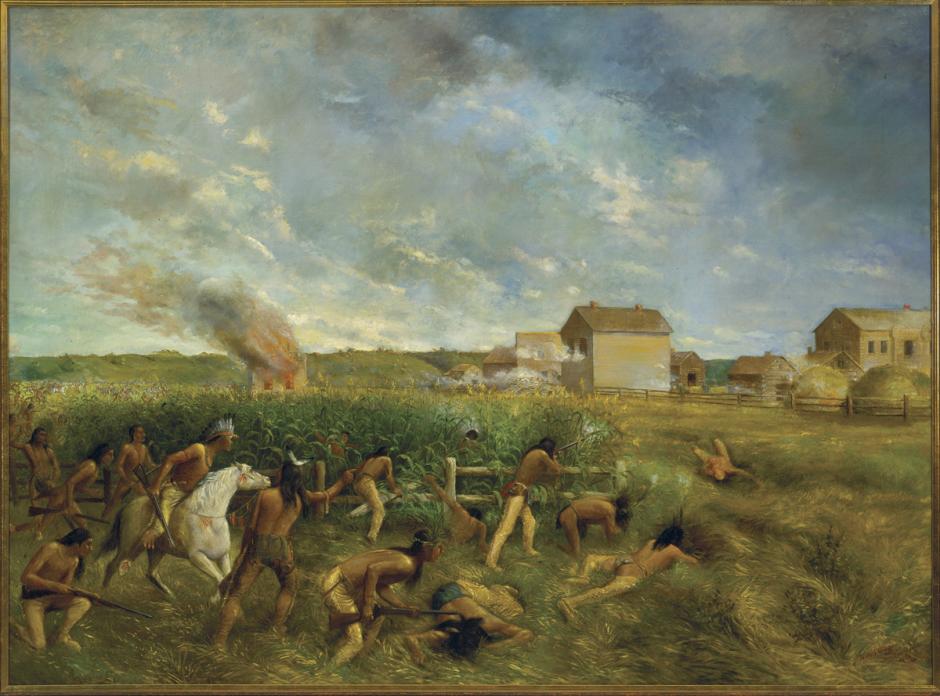The Minnesota State Capitol, not unlike other political spaces around the world, displays artwork meant to illustrate important moments in the history of the state. Of these, a number of paintings have created significant debate among politicians and community members.
Nearly a decade after the contentious Dakota War of 1862, an oil painting depicting Dakota warriors attacking white German settlers in New Ulm has, until this year, hung on the walls of the Minnesota State Capitol. The artist, Anton Gag, created “Attack on New Ulm” nearly forty years after the event. On January 26th, 1887, The New Ulm Review reported that, “Mr. Gag’s undertaking is commendable and every one interested in the history of the dark days of New Ulm should aid him.”

The painting’s celebrated accuracy rested on the fact that Gag—himself a German-Bohemian immigrant who moved to New Ulm because of its settlement as a German community—based his representation off of narratives told by white settlers, still residing in New Ulm, who claimed to distinctively remember exact scenes from the conflict. However, Gag reportedly had another source for his creation: a visit to a Dakota Indian Reservation. The Dakota story of the conflict was not the reason for the visit, but rather to draw the Dakota and their “artifacts” for representation in the painting. The painting has recently been problematized as inaccurate historical representation perpetuating stereotypical visions of Native Americans as violent and “savage”.
In the fall of 2015, the Art Subcommittee of the Minnesota State Capitol Preservation Commission, held a critical discussion on the representation of Native Americans in the art displayed at the Capitol. Committee member Gwen Westerman, Dakota educator and professor at Minnesota State University in Mankato, asked the other members to examine the paintings depicting Native Americans behind the visitor’s lens, and specifically, how Native American visitors might see the paintings without any context or description. How might visitors imagine themselves or their relatives in the art displayed?
Prompting this discussion was a previous meeting on Civil War paintings—the context and time period in which the Dakota War occurred—commissioned for the Capitol during the early 1900’s. These paintings were thoroughly researched, demonstrated by the great detail in Civil War uniforms and through the fact that artists called on Civil War veterans to return to specific battle sites to show their exact positions during a battle. Visitors to the Capitol announced their enthusiasm for what they felt was an ability to recognize family members and their stories in these paintings. In contrast, Westerman noted the lack of detail in the depictions of Dakota people, the inaccuracy of the clothing worn in these depictions. She drew further attention to the deceptive nature of another painting, “Treaty of Traverse Des Sioux”, which hides the reality of governmental pressures and misleading treaty translations between the English and Dakota languages.

In summary, Westerman suggested that being presented with only titles and one-sided memories displayed in the paintings, visitors arrive without any prior knowledge or context of the history in the paintings and are not able to fill in the blanks. She asked the subcommittee to consider the larger issue at hand: What might people take away from their experience, and how do these paintings reflect Minnesota stories?
Brieanna Watters is a Ph.D. student in sociology at the University of Minnesota. Her research interests are in mass violence, collective memory and post-colonialism in the United States.

Comments